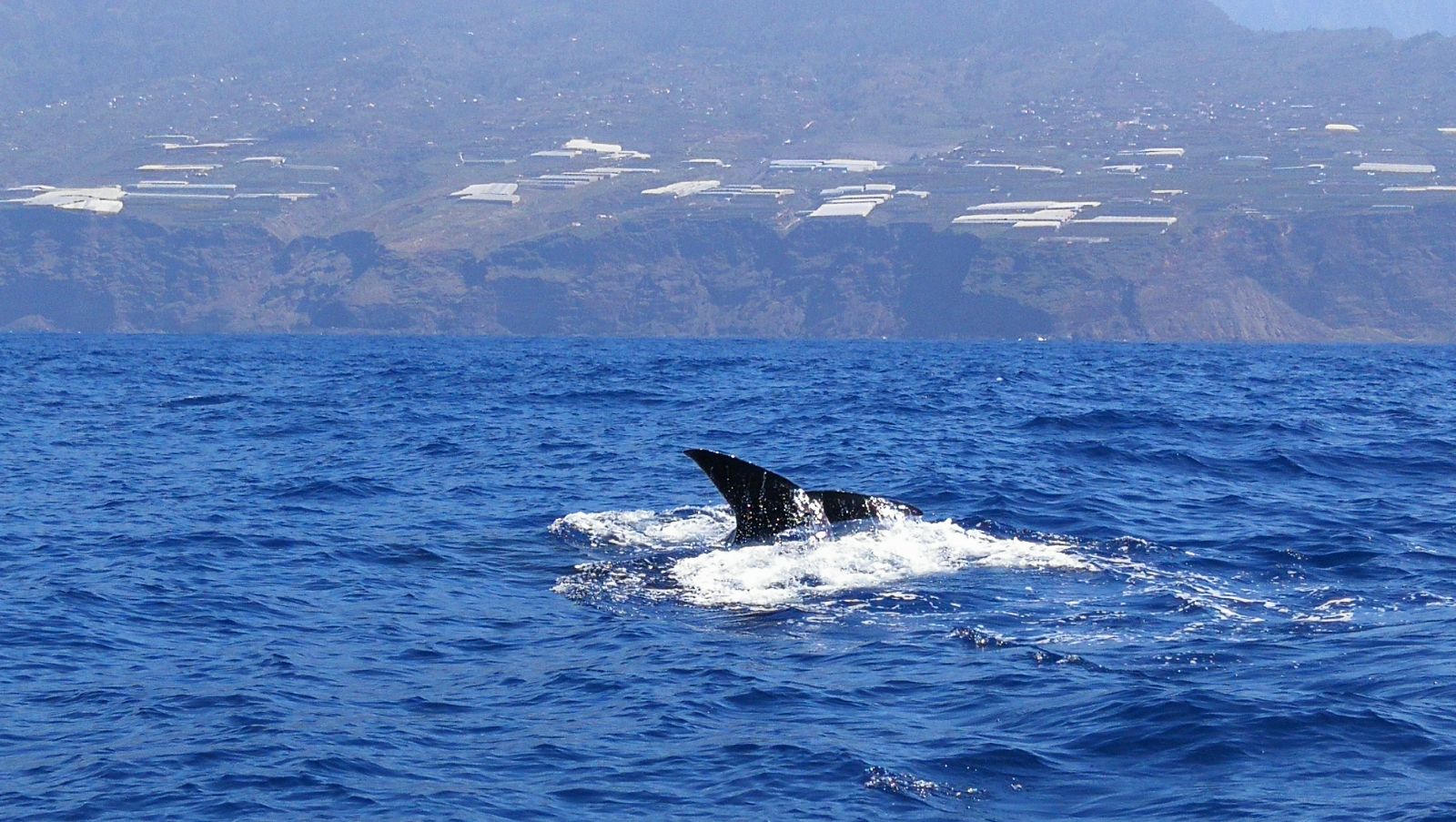Why La Palma is one of the best spots for whale watching

Sperm whale starting its dive in front of the northwestern coast of La Palma.
Today we want to tell you why the Canary Islands is one of the best spots, in Europe and worldwide, for dolphin and whale watching in the wild.
The Canary Islands. That special place in-between Europe, Africa, and America. Volcanic islands gently touched by the immensity of the Atlantic ocean.
We can feel a strong pull about them. Dolphins and whales do so. But maybe our reasons are not the same…
- One of the main reasons is the huge diversity: more than 30 identified species from the 89 known so far, belonging to 7 families, and including dolphins, pilot whales, beaked whales, sperm whales, killer whales, big whales…
- Secondly, the sightings happen really close to shore. Sometimes, they can be seen even from the land, but usually, in our boat cruises, we can watch even the biggest ones, such as sperm whales, bryde’s whales or humpback whales, next to the coast.
- Third one, seasonality: here you can find cetaceans all year-round, not need to wait for a special time. Even though that doesn’t mean they always want us to spot them! And weather conditions usually stay calm enough to go out by boat.
Of course, we are not going to tell you now all the many other reasons to come to the Canary Islands, especially to La Palma, the pretty island (La Isla Bonita). Let’s dive more into it in other posts 😉
Why that much diversity so close to shore all year round?
The Canary Islands is a special place in the Northern Atlantic ocean. Here we have a volcanic origin and the lack of continental platform, together with the downstream current of the Gulf Stream and the cold waters outcrop coming from the African coast. This grants us sea temperatures a bit lower than the expected due to latitude, helping nutrients from the continent to spread out.
Such a richness in nutrients is a treat for a huge diversity of marine life, a lot of them direct prey of whales and dolphins, whether they are krill, fishes or even giant squids.
More so, the depths here reach in between 1500 and 3000 meters in a few miles from the islands, depending on the area of the archipelago, and this huge descent offer us the possibility to find both coastal species, feeding close to surface, and oceanic ones, used to deep dives to feed, such as sperm whales, pilot whales or beaked whales, the deepest diver mammals known so far.
In the end, all of the above helps keep resident populations in the islands, such as the bottlenosed dolphin, the short-finned pilot whale, some beaked whales or the sperm whale; sometimes they stay only in the Canary Islands, while others we are just part of a bigger territory. There are also other species that come seasonally, like the Atlantic dolphin, the Bryde’s whale and other bigger whales; or ones that just go through these waters during their migrations, like the killer whale.
The Canary Islands is a subtropical paradise for them too, so to speak.
The Canary Islands, an ocean observatory.
By Rafa Herrero
Why La Palma?
So, besides being fully open to the ocean’s immensity on the western side, where we usually sail out, basically, at least til now, here they can live more peacefully. Big maritime traffic is almost close to zero in this area, nothing like Tenerife’s southern coast, and we are just a few small boats going out in the sea to spot them, and we are certified with the Blue Boat flag, following closely the recommendations specified related to responsible whale watching.
Whatever the sea adventure you choose to live with us, you can end up spotting dolphins and whales and other marine life. But there’s one completely dedicated to it: the Safari Adventure.
